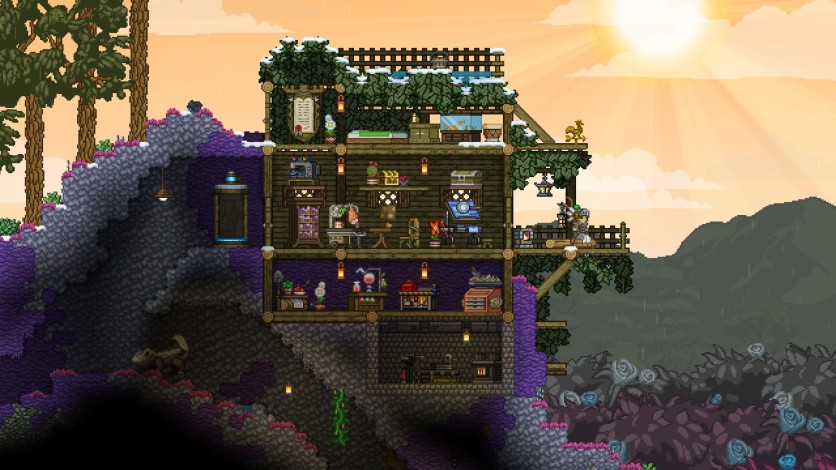LONDON: After years of being a PC favorite, “Starbound” finally launched on Xbox in October 2024, bringing its expansive sandbox adventure to a new audience.
With a follow-up quality-of-life update in December and a further boost by joining Xbox Game Pass in January, “Starbound” has the potential to reach more players than ever before. So, does this indie classic translate well to console gaming, or is it still best experienced on PC?
At its core, “Starbound” is a sandbox exploration game that lets players carve out their own journey among the stars. You begin by selecting a species (purely cosmetic in nature), escape from a doomed planet, and set off on an intergalactic adventure where you build, craft, explore and fight for survival. Unlike many crafting-based games, “Starbound” is not a grind-heavy experience; instead, it encourages creativity and discovery, providing an incredibly deep crafting system without forcing players into repetitive mechanics.
The game’s world is procedurally generated, meaning you will never run out of planets to visit. Each world has its own biomes, wildlife, and secrets to uncover. Some planets feel hospitable and lush, while others are barren and harsh, requiring players to adapt and prepare before diving into the unknown.
While “Starbound” features a central story involving the mysterious gate unlocked with Core Fragments, it does not force a linear progression — players are free to explore, build, and conquer at their own pace.
Despite its simple, pixel-art aesthetic, “Starbound” hides a surprising amount of complexity beneath the surface. Its crafting system is one of the deepest in the genre, allowing players to build everything from cozy homes to high-tech colonies. However, new players might find the initial learning curve steep. Navigation, especially on a controller, takes some getting used to, and the depth of options can feel overwhelming at first. That said, starting on Casual mode is highly recommended for beginners, because it removes some of the harsher survival elements and allows players to focus on exploration.
Combat in “Starbound” is an interesting mix of melee and ranged attacks, combined with energy management. Different weapons and abilities change the flow of combat, making it varied and engaging, although the game is not primarily focused on combat mechanics. Instead, survival and creativity take center stage.

Despite its simple, pixel-art aesthetic, “Starbound” hides a surprising amount of complexity beneath the surface. (Supplied)
While “Starbound” has made a mostly smooth transition to Xbox, it is clear that the game still feels as if it was designed primarily for PC. The user interface and navigation are not as intuitive with a controller as they are with a mouse and keyboard, making some menu-heavy interactions feel cumbersome. However, once you get used to the controls, the experience is still rewarding.
“Starbound” on Xbox is a welcome addition to the console’s indie lineup, offering a massive sandbox experience with nearly endless replayability. While the game’s PC origins are evident, patient players will find a rewarding and immersive world to explore.
If you enjoy sandbox crafting games and do not mind a bit of a learning curve, “Starbound” is well worth a try — especially now that it is on Game Pass.

























